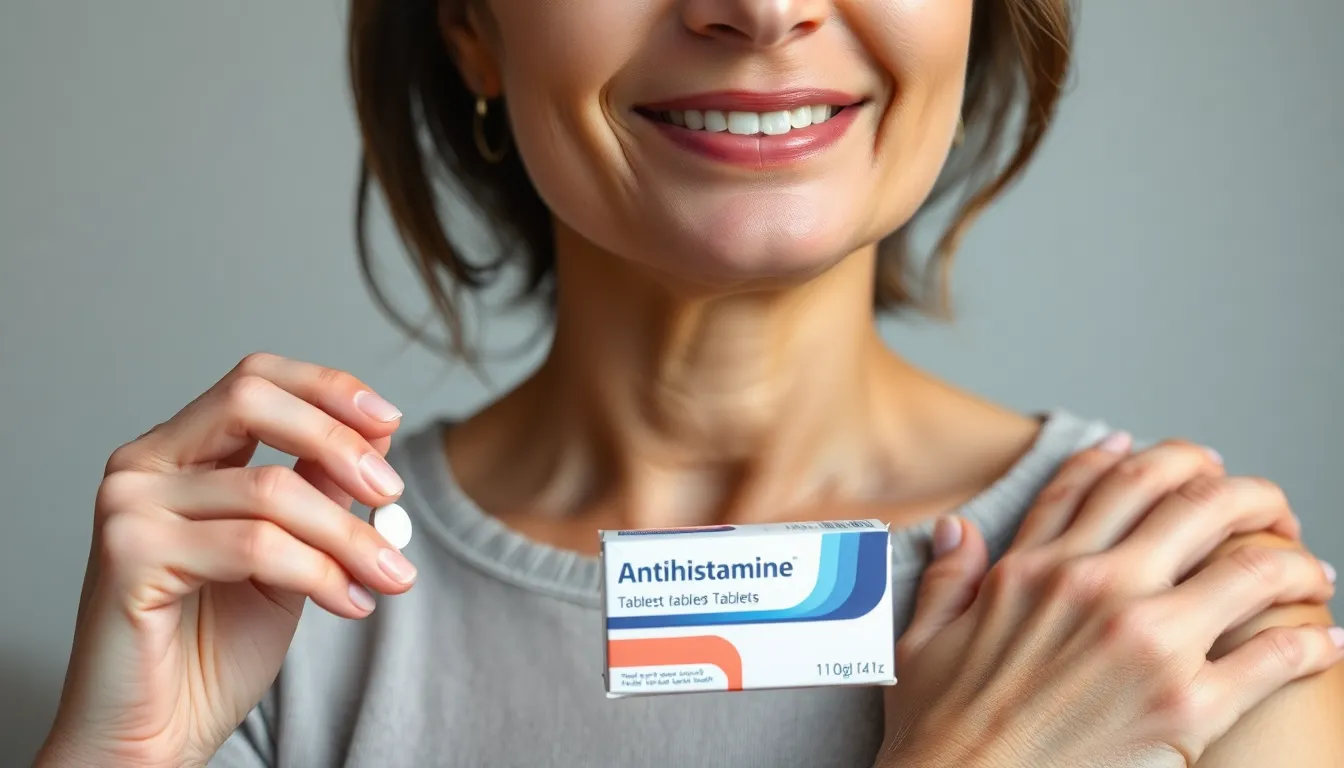Table of Contents
ToggleSkin rashes can feel like an uninvited guest at a party—itchy, uncomfortable, and just plain annoying. When those pesky hives or rashes show up, finding the right antihistamine can make all the difference. It’s like having the perfect bouncer to kick out the irritation and restore peace to your skin.
Overview of Skin Rashes
Skin rashes, including conditions like eczema, dermatitis, and hives, represent various allergic reactions or irritations. These reactions manifest as inflamed, itchy patches that can disrupt daily activities. Allergens, irritants, and environmental factors often trigger them.
Hives, medically known as urticaria, appear as raised, red welts on the skin. They can arise rapidly, often within minutes of contact with an allergen, such as certain foods or medications. Eczema, also referred to as atopic dermatitis, usually involves chronic inflammation and provides a long-lasting challenge for many individuals.
Contact dermatitis occurs when the skin reacts to a substance after direct contact. This reaction results in redness, itching, and sometimes blistering. Individuals may experience varying severity levels, depending on the allergen’s potency and skin sensitivity.
Some skin rashes also originate from infections or skin conditions. Fungal infections, for example, can cause red, scaly patches, while bacterial infections may lead to pus-filled bumps. Each type of rash has unique characteristics and requires different treatment approaches.
Treatment options for skin rashes range from topical applications to oral medications. Topical corticosteroids often alleviate inflammation and itching. Oral antihistamines play a crucial role in managing allergic reactions, especially in the case of hives. Finding the right antihistamine is vital for effective relief.
Understanding the specific rash type helps in determining the most effective approach. Consulting a healthcare professional guarantees accurate diagnosis and proper treatment.
Understanding Antihistamines

Antihistamines play a vital role in treating skin rashes and other allergic reactions. These medications target histamine, a chemical involved in the body’s immune response.
How Antihistamines Work
Antihistamines block the action of histamine on H1 receptors. This action reduces symptoms like itching, redness, and swelling. Effects occur quickly, offering relief from discomfort. Digital and physical healthcare resources emphasize their importance for managing allergic reactions. Many antihistamines also cross the blood-brain barrier, leading to sedative effects. Some are non-drowsy, making them suitable for daily use.
Types of Antihistamines
Antihistamines generally fall into two categories: first-generation and second-generation. First-generation antihistamines, such as diphenhydramine, often cause drowsiness due to their ability to penetrate the central nervous system. Second-generation antihistamines, including loratadine and cetirizine, cause fewer side effects. Non-drowsy formulas allow individuals to maintain regular activities without sedation. Both types effectively alleviate symptoms; however, the choice depends on individual needs and reactions. Consulting a healthcare professional aids in determining the appropriate option.
Top Antihistamines for Skin Rash
Antihistamines play a crucial role in alleviating skin rashes and other allergies. Understanding the different types helps in selecting the right option.
First-Generation Antihistamines
First-generation antihistamines are effective for treating allergic reactions and skin rashes. Medications like diphenhydramine and chlorpheniramine often provide quick relief. These antihistamines work by blocking the action of histamine, leading to reduced itching and swelling. However, they commonly cause drowsiness, making them less ideal for daytime use. It’s essential to consider their sedative effects when taking them for skin issues. For individuals seeking immediate relief during nighttime or severe allergic reactions, first-generation antihistamines can be beneficial.
Second-Generation Antihistamines
Second-generation antihistamines offer symptom relief without significant sedation. Options like loratadine and cetirizine are popular choices for managing skin rashes while allowing for everyday activities. These medications typically provide longer-lasting relief, targeting itchiness and redness more efficiently. Their non-drowsy formulation makes them suitable for daytime use, appealing to individuals needing to maintain productivity. Selecting a second-generation option often depends on personal tolerance and the severity of symptoms. For many, these antihistamines represent a balanced approach to treating skin-related allergies.
Factors to Consider When Choosing
Selecting the right antihistamine for skin rashes involves evaluating several critical factors.
Age and Health Conditions
Age plays a significant role in determining the appropriate antihistamine. Children often require different dosages than adults. Adults with chronic health conditions, such as liver or kidney issues, may face challenges with certain antihistamines due to potential organ strain. Older adults also tend to be more sensitive to medications, necessitating careful selection. Individual health conditions impact drug metabolism. Individuals with allergies or asthma must consider antihistamines that align with their overall treatment plan. Consulting a healthcare professional ensures the choice of a safe and effective option tailored to age and health circumstances.
Side Effects and Interactions
Side effects can vary between antihistamines. First-generation options like diphenhydramine typically cause drowsiness, which may not suit those needing daytime alertness. Second-generation antihistamines, such as loratadine, usually present fewer sedative effects. Additionally, interactions with other medications can pose risks. Certain antihistamines might amplify the effects of sedatives or blood pressure medications. Individuals on multiple medications must check for potential interactions. Understanding personal tolerances is crucial for minimizing adverse effects. Seeking guidance from a healthcare provider aids in navigating these considerations effectively.
Finding the right antihistamine for skin rashes can significantly enhance comfort and quality of life. By understanding the specific type of rash and its underlying causes individuals can make informed choices about treatment options. Whether opting for a first-generation antihistamine for quick relief or a second-generation option for daily use the key lies in personalizing the approach to fit individual needs.
Consulting a healthcare professional remains essential to ensure safe and effective treatment tailored to unique circumstances. With the right antihistamine in hand individuals can effectively manage their symptoms and regain their peace of mind.







